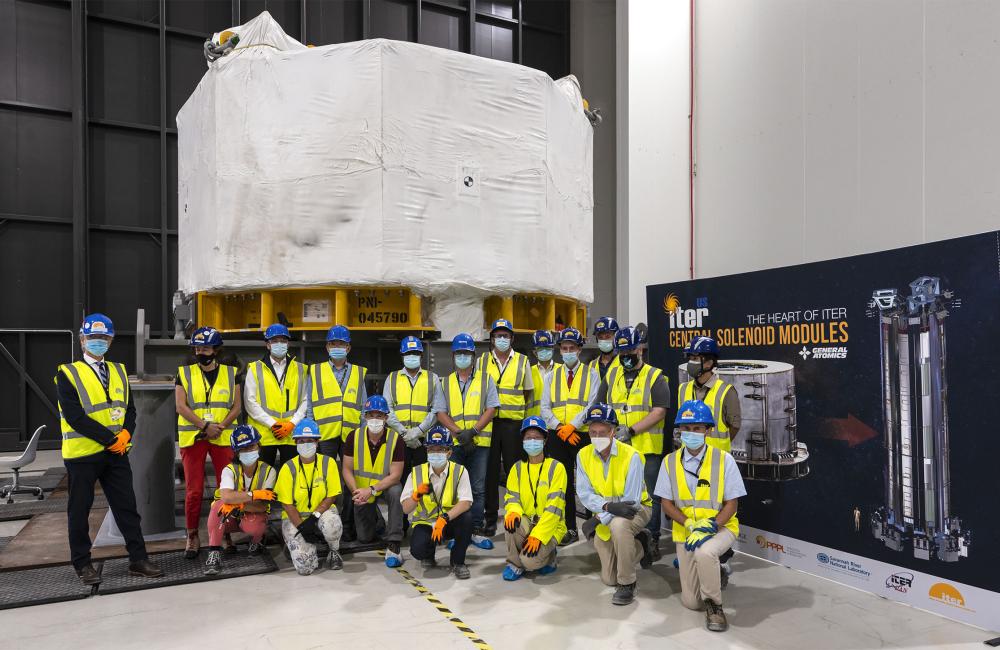The successful delivery of the first central solenoid magnet was marked with a reception at the ITER site in September 2021. Photo: ITER Organization
The arrival at the ITER site of the first of seven 110-ton magnet modules for ITER’s central solenoid attracted attention around the world. But that milestone was just one among a slew of recent US ITER accomplishments.
Once all the modules are delivered, the international team will use specialized tools provided by US ITER to stack them into the 60-foot tall solenoid. The last of these, the lifting fixture, was delivered to the ITER site in September after successful factory acceptance tests. The solenoid assembly tooling varies in size from the 43-ton lifting fixture to a coffee-cup size module positioner that will help align the stack of modules with sub-millimeter precision.
“Recent appropriations for US ITER have enabled us to make progress across the project,” said Stan Wiles, US ITER Project Manager.
The 2021 fiscal period was also a record year for contract placement by US ITER. The procurement team handled nearly $85 million in new and modified contracts–the biggest year yet for the project, which is managed by Oak Ridge National Laboratory. Among the achievements are initial contracts for the pellet injection system and electron cyclotron heating transmission lines.
“The technical teams have accomplished a great deal despite COVID,” said Graham Rossano, US ITER’s technical systems division director. “Most of the vendors were able to keep up production, with minor impacts."
General Atomics has been fabricating the modules that will make up the magnetic heart of ITER, the central solenoid. The September delivery of the first module was the culmination of a decade of hard work. The second module will be delivered later this month.
This past year’s progress also featured several successful final design reviews, including for some of the support structures for two instruments that monitor electron density in the plasma–a low-field side reflectometer and a toroidal interferometer/polarimeter.
Another area to clear the final design hurdle was a portion of the service vacuum system, which provides a clean, low-pressure environment for more than 3,500 clients as part of the overall vacuum auxiliary and roughing pumps systems that US ITER is contributing to the project.
US ITER is providing 12 hardware systems to ITER, the international science collaboration that aims to show the feasibility of fusion energy. Two of those systems have been delivered in full, five are in fabrication, four are in prototyping and one is in design. Since the start of the US ITER project, more than $1.3 billion has been awarded to industry and universities and obligated to national laboratories in 46 states plus the District of Columbia.
—Kristen Coyne





